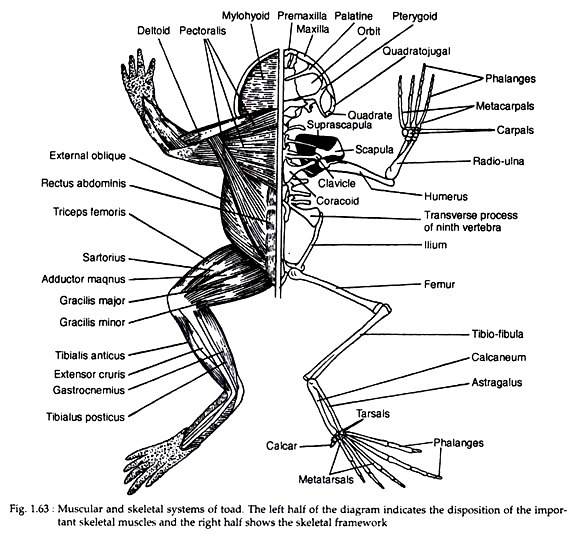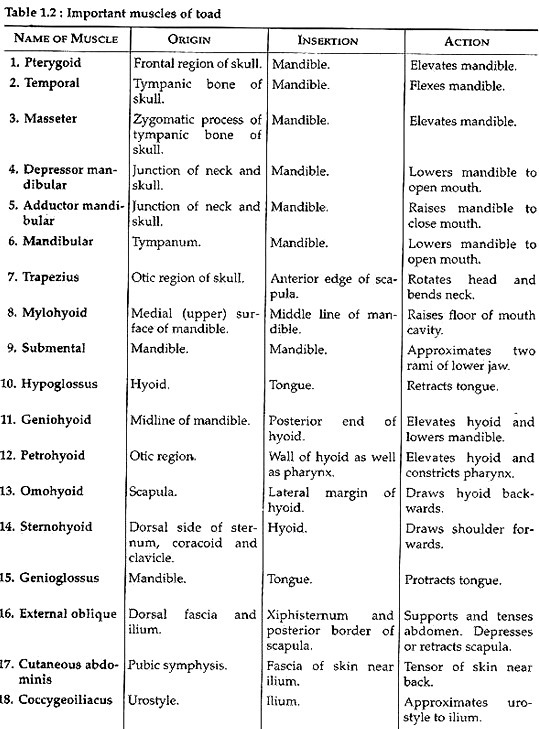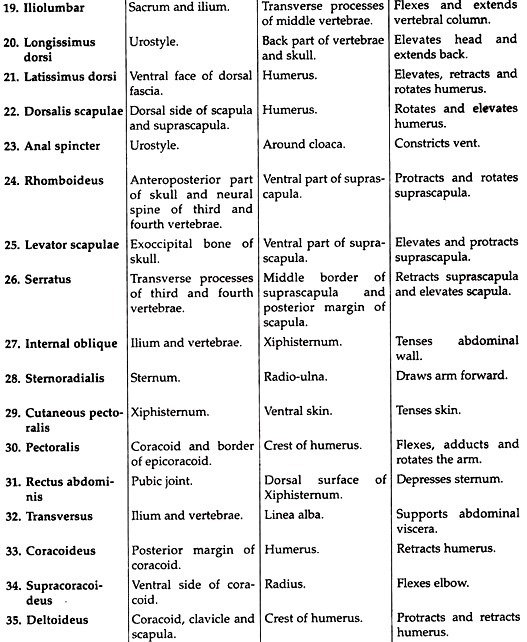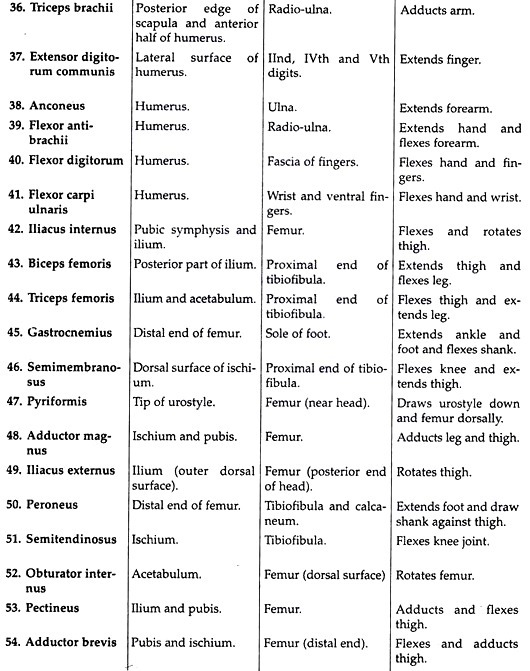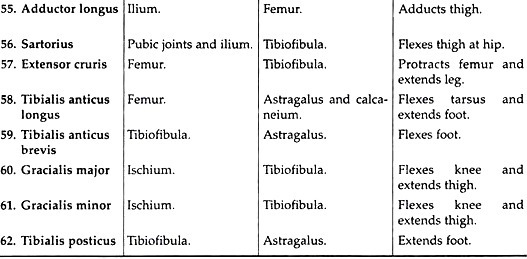The muscular system of toad is composed of muscles which are used primarily for the movement of the body. There are three types of muscles: striated muscles, un-striated muscles and cardiac muscles. The striated muscles can be contracted at will and are attached to the skeleton. So they are also known as the skeletal muscles. These muscles form the main mass of the external musculature.
There are many skeletal muscles in the body of toad and some important ones are shown in Fig. 1.63. The muscles possess the power of contraction and relaxation. All the muscles are mostly arranged in opposing groups in such a fashion that when one set contracts, the opposing set remains in a relaxed state. This coordination is controlled by the nervous system.
The skeletal muscles in toad are grouped into the following general types depending on the mode of action:
ADVERTISEMENTS:
(a) Flexor muscle:
This type of muscle bends one part on another.
Example:
Biceps flexes forearm towards upper arm.
ADVERTISEMENTS:
(b) Extensor muscle:
This muscle extends or straightens a part.
Examples:
ADVERTISEMENTS:
Triceps extends forearm on upper arm.
(c) Abductor muscle:
Such a type of muscle draws a part away from the axis of body or of a limb.
Example:
Deltoid muscle draws arm forward.
(d) Adductor muscle:
This type of muscle draws a part toward the axis of the body or of a limb.
Example:
Latissimus dorsi muscle draws arm up and back.
ADVERTISEMENTS:
(e) Depressor muscle:
This muscle lowers a part.
Example:
Depressor mandibular muscle moves lower jaw down for opening the mouth.
(f) Levator muscle:
This muscle raises or elevates a part.
Example:
Masseter muscle raises lower jaw to close the mouth.
(g) Rotator muscle:
This muscle rotates a part.
Example:
Pyriformis muscle raises and rotates the femur.
